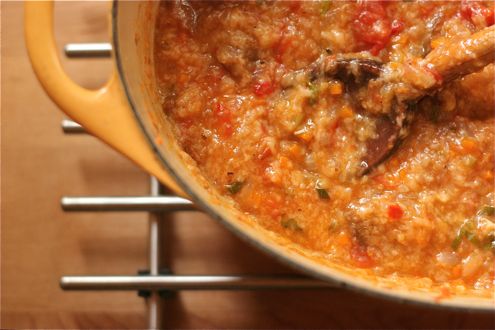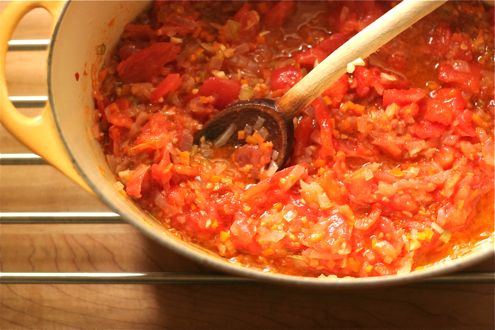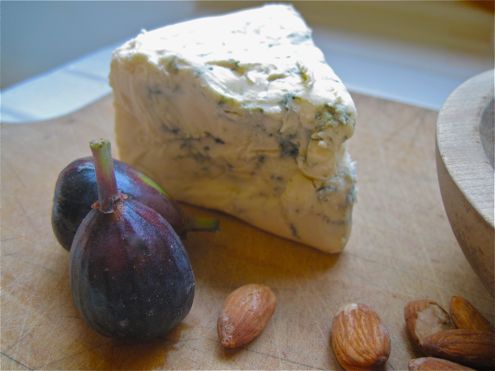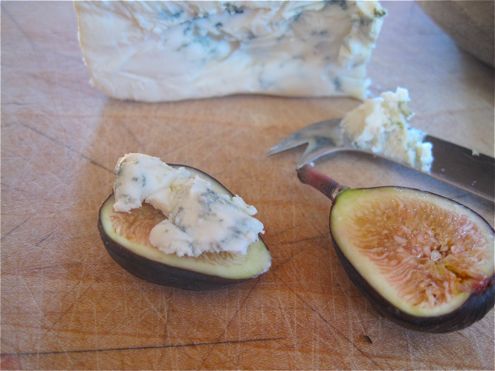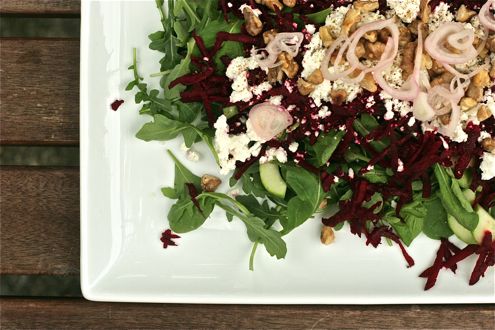On my mobile telephone, I have this weather app so I can look up what the weather’s like in the cities that I’ve lived in. I love to see whether the weather is worse in Stockholm or Seattle, or if it’s raining in Paris or sultry and warm in Rome. For mid-August, it was awfully wet today here in Seattle. Not only wet, but grey and dark and cold. When I checked that weather app for Rome it showed five little shiny yellow circles for the next five days. It’s not really surprising. 88, 90, 92, 89, 88 – so not only sunny but nice and warm too.
As I stand at the kitchen counter chopping away, I think of sitting at table on the edge of the piazza, taking in the heat and the bustle of Rome, where the scent of exhaust and cigarettes mingles with the perfume of fresh tomatoes, sliced and drizzled with olive oil and sea salt on a wide white plate. Or a bowl of bread and tomato soup, served tepid, slicked with olive oil and strewn with basil leaves. (It’s strange – I usually hate the smell of dirty cars and cigarettes here, but in Rome, I loved it.) Those were some premium tomatoes and I’ve haven’t had anything close since we moved up here from California. I loved mopping up the juices with crusty bread and washing it down with a glass of wine as I watched the passeggiata. Now I find myself on a grey day stuck in my kitchen cooking for small children, with less than wonderful tomatoes and I have to wonder, how did this happen?! And it’s August! It’s not supposed to be rainy all the time is it? Of course we are getting tomatoes but they’re from California, Mexico and those Canadian ones they grow hydroponically. Knowing it’s 90 degrees in Rome is killing me. I could be sitting at the edge of the piazza eating something so simple and delicious. Thinking of all those ripe tomatoes in the outdoor market could easily make me cry.
There’s hope though, for dinner anyway. What would you think about making tomato and bread soup? I had this soup several times a week, living in Italy. I’m sure if you’ve never heard of it, it sounds weird. If you’ve ever followed any of my soup recipes though, you know I’m a big fan of the garlic and olive oil slicked toast raft in a wide bowl of soup. This is a bit different. You cook stale bread into a chunky garlicky tomato broth for half an hour, and what you end up with is a satiny-rustic adult-baby food. All of which sounds like too much contradiction to be comprehensible. You’ll just have to trust me. Pappa al Pomodoro will transport you to the edge of a piazza in Rome no matter where you are or what the weather is like. Even if the tomatoes are pallid and mealy, this soup will still be fantastic.
A bowl of pappa al pomodoro, a glass of wine, a crisp salad and the sound of rain falling heavily outside the open back door changed everything. Tonight, the weather felt like an event to celebrate as we ate our wide bowls of silky, bread-thickened, tomato perfumed soup to the sound of raindrops. Even if the tomatoes did come all the way from Mexico.
Pappa al Pomodoro
This soup takes no time to throw together and it uses only water no stock. Don’t be tempted to substitute chicken stock for the water – this soup manages to be deeply flavorful and rich without any stock.
- 1 red onion, diced fine
- 1 slender carrot, diced fine
- 1 stalk of celery diced fine
- 1 pinch red chili flakes
- 1/2 c. olive oil
- 4 cloves of garlic, roughly chopped
- 1 1/2 lbs Roma tomatoes, skinned and roughly chopped – I use a serrated swivel peeler – this must be the fastest way to peel them. Don’t use fancy heirloom varieties – they won’t be flavorful enough here – you’ll lose everything that makes them special. what you want is a dense paste tomato – like a Roma.
- 1/2 a bunch of basil, in chiffonade
- 1/2 pound of quite stale Italian style bread, in 1/2 inch slices (you can dry it out in a 200 oven for 2o minutes. It should be quite hard.)
- 1 cup hot water
- more extra virgin olive oil for drizzling, grated parmesan for dusting
- Put the sliced stale bread in a large bowl and cover with cold water.
- Put the onion, carrots, celery, chili flakes and olive oil in a heavy 6 quart soup pot. Turn the heavy to medium and and stir until it sizzles gently. Turn down the heat and cover, cooking for 12 minutes, stirring a few times.
- Add the garlic and tomatoes, and stir, cooking for 5 more minutes.
- While the garlic and tomatoes cook down a little, drain the bread, discarding the water. Squeeze all the water out of the bread and crumble into the soup pot. Add the hot water and stir. Season with salt and pepper. Simmer over low heat for 25 minutes, stirring every few minutes
- Add the 2/3 of the basil and stir.
- Serve the soup garnished with the remaining basil in individual bowls.
- Pass the olive oil and parmesan at the table to season further.


